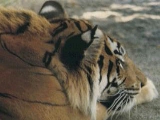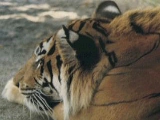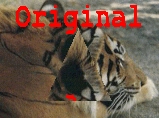| This is a child page. You can use Parent in the quick nav bar at the top or the bottom of the page to navigate directly back to the parent of this page. Some child pages are more than one level deep, and in that case will require more than one Parent click to reach the outermost document level. |
§ 16.23 - Flip
| Quick Reference to Scripting Command |
| a=FLIP(H, V) |
| Items in CAPS are 0/1 or ranges with more options than just 0/1. Ranges other than 0/1 are indicated by brackets, such as [0-2]. |

This operator may be applied directly to a Warp Layer, resulting in a geometric effect that may be removed from the underlying sublayer composite by simply zeroing out the warp or disabling that layer. In addition, the effect may be moved over the underlying sublayer composite without limit.
A visual reminder that this operator is warp-compatible is the small green dot at the upper right of its ICON in the toolbar.
The Flip operation can be used to flip an image vertically, horizontally, or both. This can be used to change the position of an object in an image, or to alter the entire image's orientation. The selected region can be made using any of the area selection methods in F/x. If the area selection is non-symmetrical, F/x will use image information from outside of the area selection to make the flipped region continuous.
 Original Image |
 Flipped Horizontally |
§ 16.23.1 - Flip Controls
§ 16.23.1.1 - Trends
Operator dialog controls that have a Trend button next to them offer animation functionality. Trend allows you to set that variable over a set of frames. Each frame of the animation can be thought of as a slice of time. The trends allow you to alter some, all, or none of the variables for a particular time slice. Variables that have multiple states can be set to any of a number of values in the trend. Variables that are either on or off can only have an on or off value in the trend. You will notice that the trend graphs have equidistantly spaced vertical lines. Each of these lines represents a frame in the animation. The number of frames can be altered using Sequence controls... in the TimeLine pull down menu. Animation lengths of 100 - 999 frames will be represented with a vertical bar being 10 frames, and animation length greater than 1000 frames will have a vertical bar for every 100 frames. Click here to view more information on Trends.
§ 16.23.1.2 - Flip Vertically
This option, when selected, will flip the selected area vertically. If the area selection is not vertically symmetrical, F/x will automatically fill the area selection with image data from outside of the area selection in a symmetrical manner. For example, if you were to vertically flip the triangle IShape, the result might look something like this:
As you can see, the flipped region contains part of the text from above. This is due to the lack of vertical symmetry in the area selection. The same holds true for the Horizontal Flip option, and horizontal symmetry. The vertical flip option can be used by itself, or in conjunction with the horizontal flip option.
§ 16.23.1.3 - Flip Horizontally
This option, when selected, will flip the selected area horizontally. If the area selection is not horizontally symmetrical, F/x will automatically fill the area selection with image data from outside of the area selection in a symmetrical manner. The example images in above show this principle for vertical flips. The horizontal flip option can be used by itself, or in conjunction with the vertical flip option.
, Previous Page . Next Page t TOC i Index o Operators g Glossary
Copyright © 1992-2007 Black Belt Systems ALL RIGHTS RESERVED Under the Pan-American Conventions
WinImages F/x Manual Version 7, Revision 6, Level A

